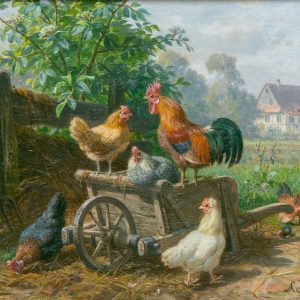
Carl Jutz
1830 Windschläg – 1916 Pfaffendorf
Short information about the artist
“In the private collections that arose on the Rhine in the 70s and 80s, a Jutz was as little missing as a Kröner or Achenbach” (Kölnische Zeitung, 5.9.1916), as a columnist of the Kölnische Zeitung stated in 1916.
Works of art on offer
More information about the artist
“In the private collections that arose on the Rhine in the 70s and 80s, a Jutz was as little missing as a Kröner or Achenbach” (Kölnische Zeitung, 5.9.1916), as a columnist of the Kölnische Zeitung stated in 1916.
Biography
Carl Jutz’s training as a painter began with a Dutch animal painter (A. Knip) before he joined the Munich artist circle around Anton Braith and Christian Mali in 1861. In Bavaria, Carl Jutz had spent several years in small artist colonies on Lake Chiemsee together with many other animal and landscape painters.
Animal painting
In 1867 he moved to Düsseldorf and perfected his eye for the precise depiction of animals, which in Düsseldorf had neither forerunners nor imitators on a comparable painterly level. Jutz specialized primarily in poultry painting, which remained his main focus until the end of his life.
Museums and collections
The British and Americans acquired many of his major works; German museums in Düsseldorf, Karlsruhe, Mannheim, Breslau and Königsberg secured pictures from his oeuvre while the painter was still alive.


